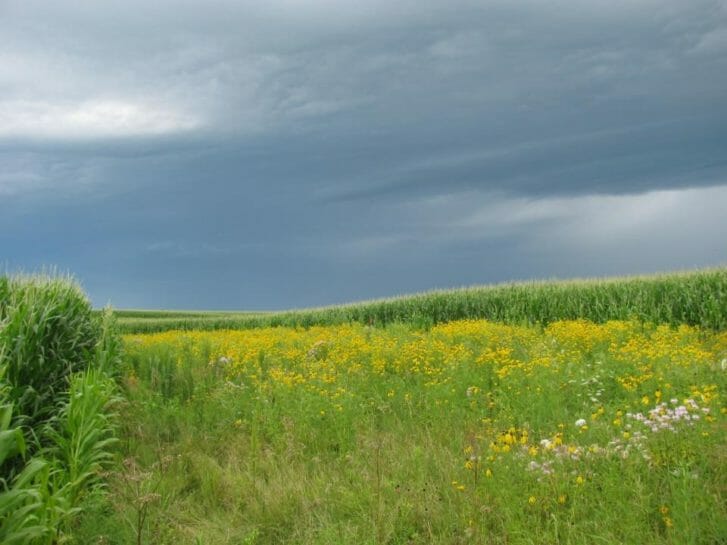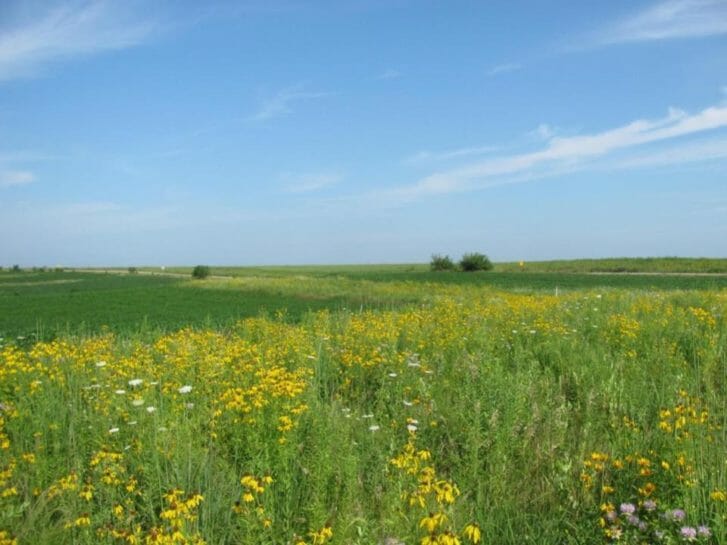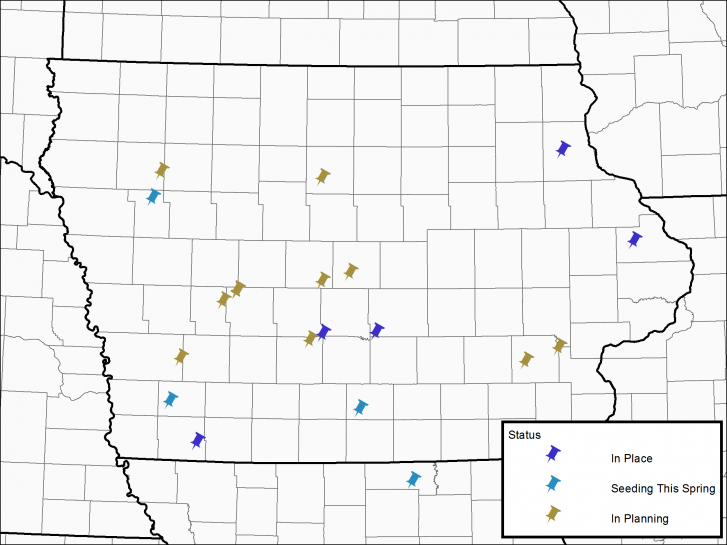Guest Blog: Frequently asked questions and field day opportunities on STRIPS project — by PFI member Tim Youngquist
My name is Tim Youngquist and I am an agricultural specialist with the STRIPS program at Iowa State University. My function is to work closely with the landowners and help guide implementation of strips on each demonstration site. I grew up on a century farm near Kiron that has been farmed by my family since 1871. Growing up in rural Iowa has given me a deep-seated passion for preserving and restoring the natural beauty of my home state. I have had extensive experience with conventional farming. From a young age I was taught to safely operate equipment and farm the land in a respectful way.

I believe that strips of native perennial vegetation, strategically placed amongst row crops can provide multifunctional benefits for farmland health. Over the past several months, I have had the opportunity to travel across Iowa and speak with farmers and landowners about the prairie strips program. I have found that there is a large amount of interest in this conservation practice. With that interest, there are also a number of questions that arise frequently. The focus of this blog post is to further explain the practice of integrating prairie into row crops. I will seek to answer some of the most frequently asked questions related to strips and to provide information about upcoming field days at demonstration sites around the state.

- Why should I put strips on my land?
A number of benefits can be achieved through implementation of prairie strips including reduction in soil loss and water runoff from your field, retention of nutrients, and an increase in biodiversity and wildlife habitat.
- What should I plant?
Native prairie species. These grasses and forbs have deep roots and give the soil its ability to hold water and nutrients. There are many native seed suppliers and agencies throughout the state who can help you design a seed mix.
- How much to prairie strips cost?
Three main categories to consider:
1. site prep and establishment – site prep, seed cost, installation
2. annual and periodic management – mowing, spraying, prescribed fire
3. annual opportunity cost – revenue loss from land taken out of row crops
- Where do I put prairie strips?
Placement depends on the field’s size, slope and soil. Strip placement and width can vary based on anticipated water movement and areas of potential concentrated flow. Where contour row curvature becomes too sharp to keep equipment aligned with rows during field operations, strips can be widened to reduce creating sharp points.
- What should I expect after the prairie strips are planted?
Prairies are different that traditional row crops, in part because they require a little more patience. Proper seeding and maintenance can help tremendously with the establishment of a functional prairie strip. During the first year the strips will look weedy and mowing is required. In the second year the strips will begin to resemble prairie and in year 3 there will be recognizable grasses and flowering forbs. Biodiversity will increase beyond year 3 as strips mature.

It is my goal to help farmers and landowners around the state see their conservation strategy on a landscape scale. Prairie strips are one part of that strategy. Iowa is a truly wonderful place to live; if prairie strips are used in conjunction with other conservation practices including, but not limited to, cover crops, no till, grassed waterways, and contour farming then we can continue to preserve and restore Iowa’s natural beauty one field at a time.
If you have questions or would like more information, I’d be happy to keep the conversation going. Contact me at:
Tim Youngquist
Iowa State University
Agricultural Specialist
3403 Agronomy Hall Ames, IA 50011-1010
712.269.0592
http://www.leopold.iastate.edu/strips-research-team
Upcoming field days with focus on prairie strips:
Three-Crop Rotations, Cover Crops and Prairie for Conservation
When: 12:30-3:00pm, Thursday, June 19th
Where: Dick Sloan Farm
3046 Harrison Ave.
Rowley, IA 52329
Science-based Trials of Row Crops integrated with Prairies (STRIPs) Field Day
When: 5:30-7:30pm, Thursday, June 19th
Where: Roverud Family Partnership Farm
19575 Sandpit Rd.
Elkader, IA 52043
Prairie Strips Installation
When: 5:30-7:30pm, Thursday, July 10th
Where: Gary Guthrie farm
58444 260th St.
Nevada, IA 50201
You can find more information on these field days in our field day guide and/or in Iowa Learning Farms’ field day guide.
